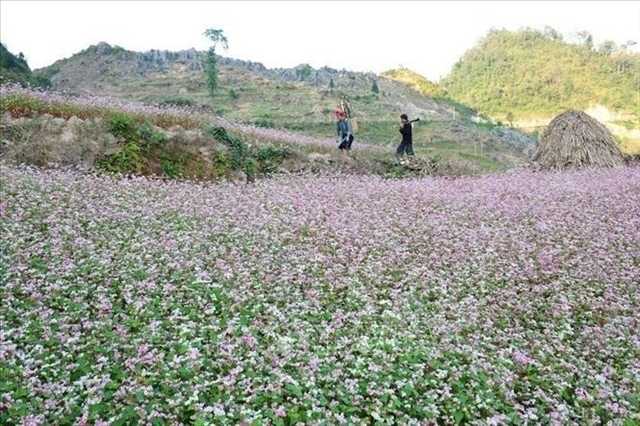 Environment
Environment

Some 5,000 craft villages across the country have been seriously polluting the environment and threatening the health of residents in surrounding areas.
 |
| Air pollution due to smoke from making ceramics in Phù Lãng Pottery Village. — VNS Photo Việt Thanh |
HÀ NỘI — Some 5,000 craft villages across the country have been seriously polluting the environment and threatening the health of residents in surrounding areas.
According to data issued by the Ministry of Natural Resources and Environment, only 4.1 per cent of craft villages use wastewater treatment systems.
In Hà Nội alone, 1,350 craft villages discharge up to 156,000 cubic metres of wastewater directly into the environment each day.
For example, four craft villages of Dương Liễu, Cát Quế, Minh Khai, and Sơn Đồng in Hoài Đức District were found to be releasing about 8,200 cubic metres of wastewater into the environment daily.
Nguyễn Thị Hiền, a resident living in Dương Liễu Commune said she and other residents had to suffer bad smells from craft villages’ wastewater, especially during hot weather.
“It’s terrible,” she said.
Some craft villages processing farm produce in the districts of Thanh Oai and Bắc Từ Liêm also discharge about 7,000 cubic metres of wastewater daily.
In Hải Dương Province - home to 66 craft villages, wastewater produced by the Phú Lộc wine-producing craft village and the Tống Buồng rice-paper producing craft village was pumped directly into the province’s canals.
As a result, statistics from the provincial Natural Resources and Environment Department showed that the concentration of Chemical Oxygen Demand (COD) - the amount of oxygen needed in water, was 12-15 times higher than permitted, the concentration of total suspended solids (TSS) was 2-3 times higher than permitted, and the concentration of ammonia was 12-16 times higher than permitted.
Causes and solutions
Ngọ Duy Hiểu, deputy head of Hà Nội’s National Assembly delegation said authorised agencies have failed to deal with violations related to craft village pollution. Therefore they were partly blamed for the ongoing problems.
Poor co-operation between local residents and authorised agencies in discovering and handling violations also exacerbated the situation, he said.
Additionally, funds for reversing the pollution as well as raising awareness among village workers about the protection of water resources were still limited, he added.
In the short-term, Hà Nội has piloted a model to build centralised wastewater treatment systems in craft villages in districts of Chương Mỹ, Hoài Đức and Quốc Oai.
Trần Thị Phương Hoa, chairwoman of Hà Nội Women’s Union said city administration should conduct assessments of the effectiveness of this model.
It was also advised to make a list of craft villages that were heavy polluters, and then allocating funds to fix the problem soon, she said.
Vice chairman of the People’s Committee of Gia Lâm District, Nguyễn Ngọc Thuần - the district where Bát Tràng Craft Village located, suggested authorised agencies strengthen punishments to bring the situation under control.
In the long-term, Hà Nội’s administration has approved a project, worth VNĐ1.35 trillion (US$59.4 million) in an attempt to end pollution caused by 1,350 craft villages in the city by 2030.
In the meantime, Hải Dương administration has consulted experts and relevant agencies to come up with solutions.
Senior water expert Đào Trọng Tứ said at first authorities should focus on educating people about the importance of water resources.
“So that public awareness of water resource protection will be improved soon,” he said.
Tứ also asked policy-makers to issue policies that encourage private enterprises to invest in wastewater treatment systems as a potential solution for the situation.— VNS




